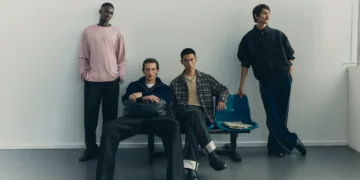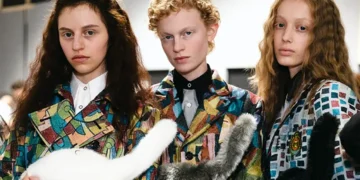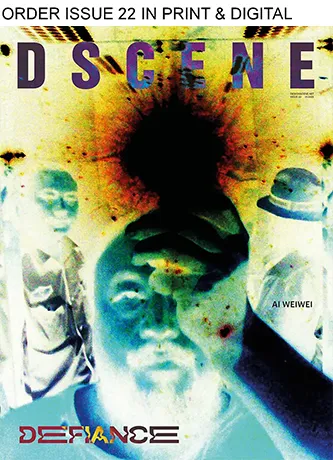
5000 Fall Winter 2025 collection transforms the concept of “Bootsy” into a study of style, identity, and cultural expression. Rooted in Oakland’s slang and social fabric, “Bootsy” has long carried a layered meaning, both a critique and a form of celebration. Through this collection, 5000 explores the power of the term, its contradictions, and its evolution, proving that what may seem uncool or exaggerated can actually define self-expression.
The word “Bootsy” has origins in the Bay Area, oscillating between an insult and an affirmation. It can describe something awkward, out of touch, or unfashionable, yet in the right context, it embodies audacity, eccentricity, and raw authenticity. The term gained prominence through Bay Area hip-hop, with artists like E-40 weaving it into the regional lexicon. His 1995 album In a Major Way reinforced the term’s association with local style codes and authenticity, setting a linguistic standard for what was considered fresh, or out of step.

At the same time, “Bootsy” draws from funk legend Bootsy Collins, whose flamboyant, larger-than-life aesthetic transformed him into an icon of uninhibited creativity. His presence, marked by exaggerated outfits and fearless self-expression, influenced the more celebratory meaning of the term. In this sense, “Bootsy” becomes an embrace of individuality, a rejection of polished perfection in favor of unfiltered personal style.
5000 presents “Bootsy” as a cultural force that intersects with Susan Sontag’s theory of Camp. Both concepts defy traditional taste, elevating excess, theatricality, and defiance. Sontag described Camp as an embrace of things “so bad they’re good,” and “Bootsy” follows a similar philosophy, reframing the uncool as something worthy of admiration. In its best form, “Bootsy” challenges mainstream norms, turning exaggerated style into an assertion of selfhood. Even in its most critical sense, the term shares Camp’s playful mockery of pretense.
5000 doesn’t just use the word “Bootsy” as inspiration, it transforms it into a study of fashion as a cultural artifact. The collection asks what it means to be “Hella Bootsy,” an Oakland expression that reclaims the term as an act of rebellion. It’s about rejecting conformity and embracing self-definition, even when it contradicts conventional ideas of taste.

The music accompanying the Fall Winter 2025 show reflects the essence of Bootsy, not just as a word, but as a feeling embedded in the streets of Oakland. The score connects the low hum of fog horns rolling over the Bay, the unpredictable burst of midnight fireworks, and the rhythmic chatter of Amtrak cars cutting through the city. The metallic glide of BART trains echoes through tunnels, mirroring the restless energy of a place that refuses to be static.
Much like the collection itself, the soundscape is a layered tribute to movement, memory, and the textures of daily life in the Bay. This isn’t just about fashion, it’s about a mindset, a rhythm, and a defiant embrace of personal identity. 5000 takes the contradictions of “Bootsy” and translates them into a visual language that challenges expectations. The collection doesn’t just celebrate polished aesthetics, it thrives on exaggeration, unpredictability, and the art of not taking things too seriously. By redefining a term often dismissed as negative, 5000 turns Bootsy into a badge of honor, proving that the best style often comes from those who refuse to follow the rules.




















